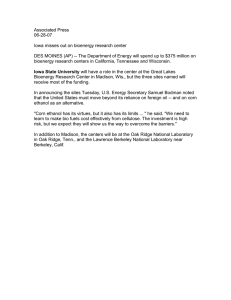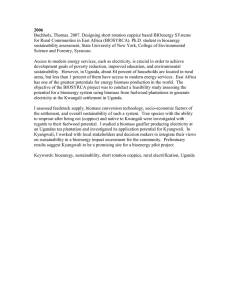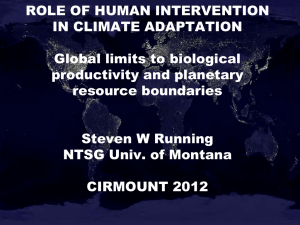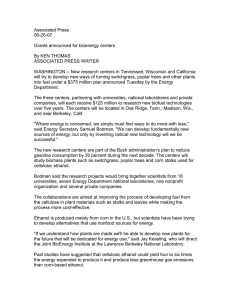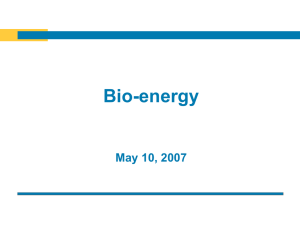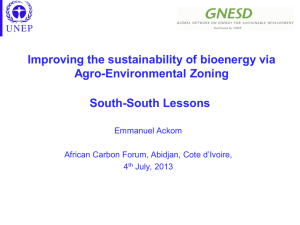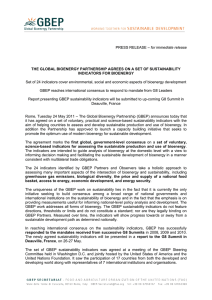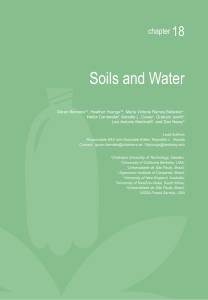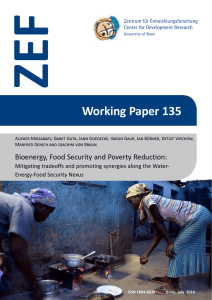Bioenergy – modern option with multiple benefits … and challenges Semida Silveira
advertisement
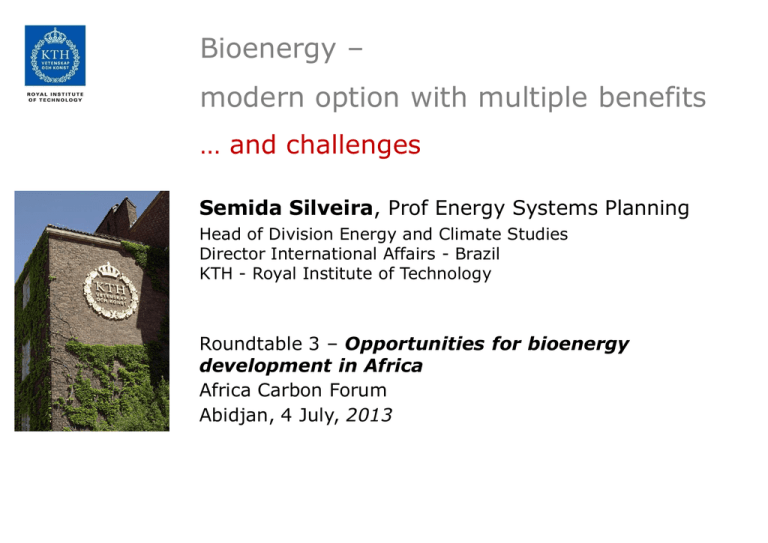
Bioenergy – modern option with multiple benefits … and challenges Semida Silveira, Prof Energy Systems Planning Head of Division Energy and Climate Studies Director International Affairs - Brazil KTH - Royal Institute of Technology Roundtable 3 – Opportunities for bioenergy development in Africa Africa Carbon Forum Abidjan, 4 July, 2013 The energy reality of many African countries Income and final energy consumption per capita in developing countries – typical trend Source: WEO 2010. Privileged climate and soil conditions for biomass production Sizing the bioenergy potential along the chain POLICIES AND INSTITUTIONAL FRAMEWORK FOR BIOENERGY DEVELOPMENT Logistics / infrastructure LOCAL POTENTIAL Natural conditions Know-how Priorities Collection/processing Road/railroad systems Storage Industrial synergy Biomass sources Forest residues Agriculture residues Natural capital Energy crops Waste Logistics / infrastructure Distribution District cooling / heating Road / railroad systems Ports Conversion technology CHP (co-generation) Integration with other production systems Biofuels for transport Heat / cooling DEMAND MARKETS Local Regional International End - uses Biofuels for transport Electricity Refrigeration Heat Climate system Carbon capture Total energy supply in Sweden 1970-2010, in TWh 616 TWh supply - 411 TWh useful energy Renewable generation in electricity certificate system in Sweden 2003-2010, in TWh Renewables in the EU27, 1995-2008 (Mtoe) Present EU biomass potential (ktoe) per category Source: AEBIOM 2011 The Brazilian energy matrix 1940-2010 (in 103 toe) Source: EPE, 2011 Primary energy supply in Brazil 2010 by primary source Source: EPE, 2011 Brazilian sugar-ethanol production model ELECTRIFICATION electricity cane trash CHP plant bagasse sugarcane washing AGRICULTURE DEVELOPMENT juice extraction steam electricity juice treatment fermentation juice treatment sugar production distillation ethanol sugar INTERNATIONAL MARKETS /FOREIGN CURRENCY Creating jobs through energy provision (the example of Brazil) Cost of creating various jobs by industry type (1000 USD) Jobs Created per equivalent energy output (Oil = 1) Ethanol Chemical 152 Metallurgy Oil 1 Capital goods Hydroelectric 3 Coal 4 0 Consumer goods Ethanol 50 100 150 200 Source: Goldemberg, Jose (2002) 0 50 100 150 200 250 Production and exports of etanol 1997-2010 Billions of litres Sugarcane Deforestation in the Brazilian Amazon 1991-2010, in km2 Source: IBGE, 2011 Brazilian domestic electricity supply 2010 Source: ONS 2010 Source: EPE 2011 Modern bioenergy – a tool for poverty reduction biomass widely available in many developing countries can deliver all the major forms of energy at any time offer synergy with other sectors (e.g agriculture) can be carbon neutral and act as carbon sink can help restore unproductive degraded lands promote rural development (job and income generation, electrification) value-added more easily retained locally allow for reduction of fuel imports (improved trade balance) Sizing the bioenergy opportunities: challenges ahead in Africa Evaluation of resource base and potential (i.e. land issues) Adaptation of technologies to local resources and conditions Policy framework to promote biomass-based projects Logistics to promote modern bioenergy – from agriculture to energy, environment and climate policy Multi-sectoral coordination: (i.e public, private, donors) and industries (i.e.forestry, agriculture) Methodologies to evaluate multi-sectoral synergies and trade-offs Questions to be addressed by the African Bioenergy Platform • How can we develop sustainable bioenergy systems in Africa observing multi-sectoral synergies? • What are the solutions that will lead to mitigation and adaptation to climate change while also promoting sustainable development? • How can the development of bioenergy in Africa be supported by the global climate policy frameworks?
